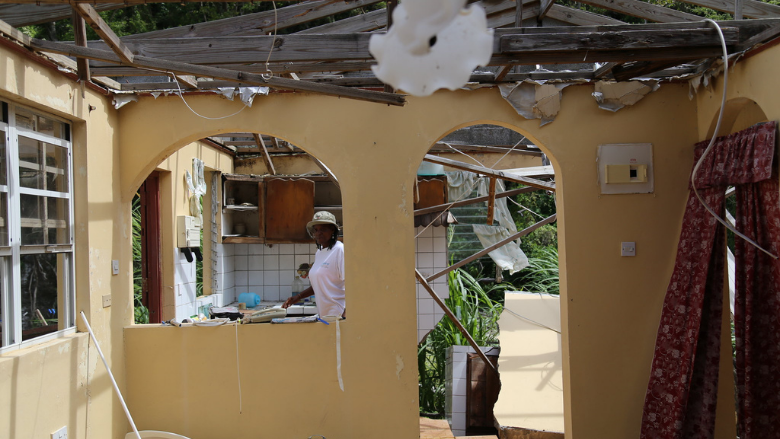Disaster risk profiles are critical tools that help leaders and disaster risk practitioners make informed decisions on managing disaster risk. National-level disaster risk profiles provide information on possible losses in future disasters; guide the placement of infrastructure to minimize new risk; inform urban planning and risk reduction measures; and guide disaster risk financing efforts, to name a few.
But there are now so many disaster risk profiles that exist for countries around the world. For Guatemala alone, for example, there are at least four publicly-available profiles and each provides different results and uses varying data sources and methodologies. For government officials, disaster risk practitioners and project managers, this can be quite confusing – and daunting.
So, how can disaster risk managers wade through the sea of profiles that exist to identify those that appropriately address their country’s needs? The World Bank’s Disaster-Resilience Analytics and Solutions (D-RAS) team developed the Risk Viewer Platform to take some of the risk out of using risk profiles. The platform addresses the following challenges:
- What risk profiles are available for a given country?
- What can (or can’t) these profiles be used for?
- How do the results from different profiles compare for a given country?
- How do results compare across multiple countries?
To develop the platform, the team collated national-level risk profiles for 43 countries across the Latin America and Caribbean region and for each profile, assessed over 100 key disaster risk metrics relating to hazard (earthquake, windstorm or flood information), exposure (the built environment including housing and infrastructure), and vulnerability (the susceptibility of people and assets to the impacts of hazards). The team then identified seven potential applications of risk profiles, ranging from qualitative Disaster Risk Management advocacy, to quantitative financial planning purposes. Then using the assessment of the risk metrics, the Platform advises on the suitability of each risk profile for each possible application, as well as providing key information related to the risk profile. For more information on the methodology behind the tool, click here.
There is now growing interest in the platform across the Latin America and Caribbean region.
“In an intuitive way, the Risk Viewer provides a quick impression of the uncertainty in the disaster risk assessment. It further allows users to evaluate and directly access all risk profiles quickly,” advised Michael Spranger, Chief Risk Management Officer, Caribbean Catastrophe Risk Insurance Facility Segregated Portfolio Company (CCRIF SPC). CCRIF SPC is one of several regional entities currently using the platform to address some of the following questions.
What profiles are available for my country? The Risk Viewer Platform provides a quick snapshot of the risk profiles that are publicly available for earthquakes, windstorms and floods at the regional level, but also provides more detailed information, results and recommendations at the country-level (Figure 1).
Figure 1: Overview of the number of risk profiles available for each country for earthquake (left), windstorm (centre), and flood (right).
What should or shouldn’t I use these profiles for? The Risk Viewer Platform also recommends appropriate applications for the national-level risk profiles that exist for a given country, highlighting limitations and promoting the best use of the available information. For example, the Risk Viewer provided the World Bank Urban and DRM team working in Uruguay with an important snapshot of the risk profile datasets available in-country. This allowed the team to initiate dialogues around risk information uses and limitations. It also provided a basis for policy recommendations on Climate Resilience topics and on potential approaches to promoting resilience investments in flood-prone secondary cities.
How do different profiles compare for my country? By displaying results for all profiles side-by-side, and providing information to explain the differences, the Platform helps users understand the range and uncertainty in results. It is also a tool for communicating this understanding through customized reports that can be generated for any country.
How do risk results compare across multiple countries? The Platform allows users to benchmark risk across other countries in the region, as was done in the case of Ecuador. “When we were working with Ecuador’s Ministry of Economy and Finance to develop the country’s first Disaster Risk Financing Strategy earlier this year, the Risk Viewer helped the government visualize expected losses from earthquakes and floods, and compare them to those in neighbouring countries, showing the considerable risk that a large earthquake could pose to Ecuador’s public finances and the need to address these issues in its Disaster Risk Financing strategy,” reported Alexander Agosti, World Bank Senior Disaster Risk Management Specialist.
Figure 2: Comparison of normalized exposure results (left) and earthquake loss-results (right) for the available risk-profiles for Central America. Comparison shows, for example, outliers such as the higher relative exposure for CAPRA for Nicaragua, or higher relative loss for GAR 15 for Honduras.
The Risk Viewer platform currently focuses on the Latin America and Caribbean Region, but there is growing demand to expand to other regions. To explore the platform further, please visit https://riskviewer.worldbank.org/. Please also share any thoughts and suggestions on how the platform can be useful for you.

